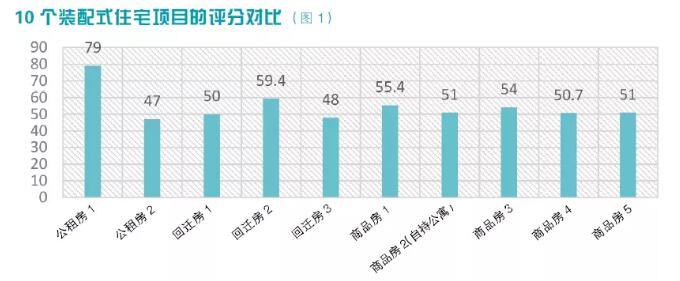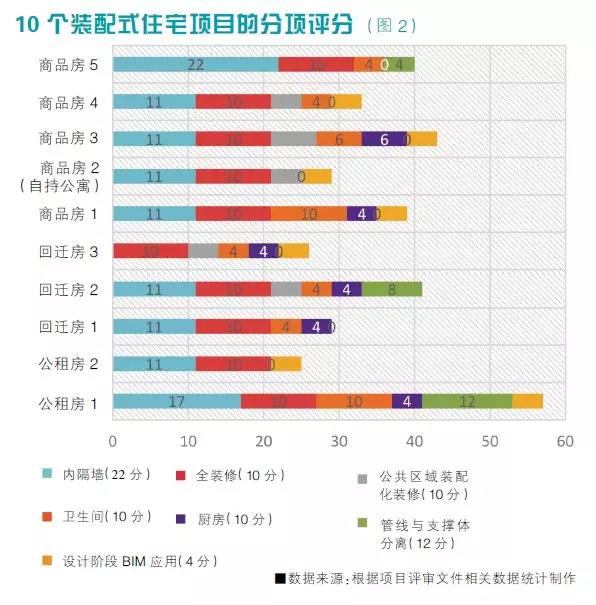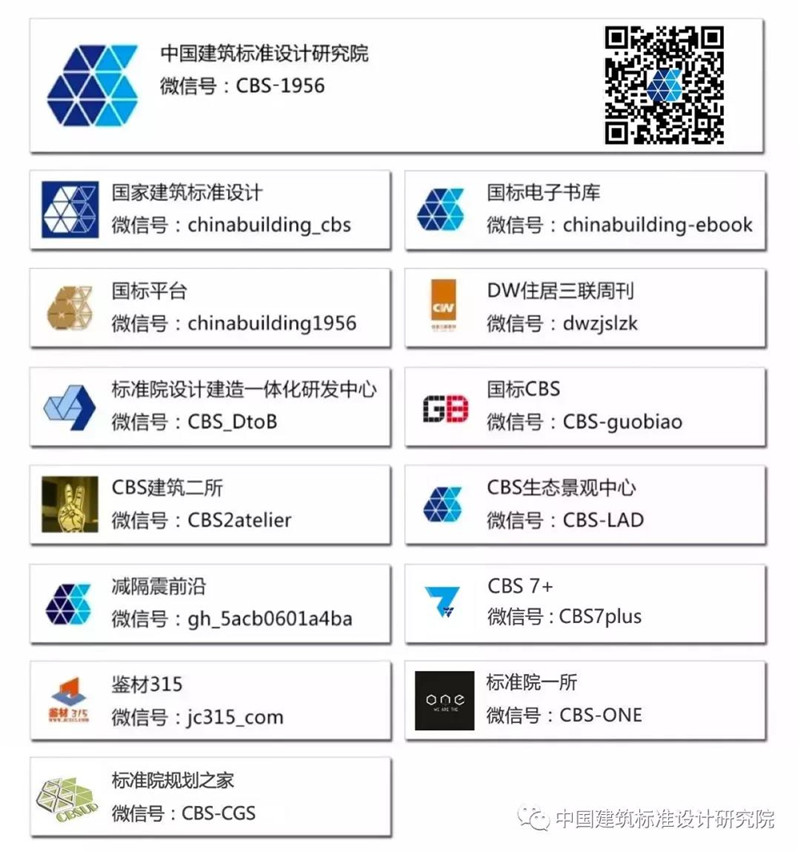Expert Perspective | Wei Suwei: Assembled Installation is a High Quality Installation

Assembled interior is an important part of assembled building. It is a decoration method characterized by the application of factory parts and the construction of assembling construction. Its essence is to solve the quality problems of traditional decoration in the way of particularization, with the core goal of improving quality and efficiency, reducing labor and energy consumption. From the deep meaning, assembly-type interior is a kind of high-quality interior which adapts to the current industry development situation. It is imperative to promote assembly-type interior.
1.
Current situation of industry development
Based on the recent industry research in Beijing, Shanghai, Shenzhen and other places in the process of compiling the engineering construction industry standard "Assembled Interior Decoration Technical Standard", the author summarizes the current industry development status as follows:
Firstly, the types of implementation projects of assembled interior are mainly public rental housing, talent apartment, long-term rental apartment, etc.
The common characteristics of these projects are that they are highly standardized and attach importance to later management and maintenance. However, because the owner of the house is not the resident, and the resident population will change regularly, it will hide the demand of some real customers for the interior.
Secondly, in the field of commercial housing, although assembly-type interior has received great attention and some pilot practical exploration, most developers take a more cautious attitude in the mass projects that need to be landed. Only the stronger developers in the industry such as Vanke have carried out some mass projects.
The reason is that commercial housing projects are facing a rigorous market test. Besides the maturity of technology, there are also various factors such as the habits of small owners, the acceptance of new technology and so on, which will affect sales performance. Generally speaking, the advantages brought about by the current assembled interior are not fully in line with the demand for commercial housing.
First of all, from the quality control level, because assembly-type interior contains many new technologies, new practices and new parts, many products lack experience and data support of Engineering application, which makes it more difficult to control than traditional decoration in project application, resulting in more careful selection or temporary wait-and-see by development departments; secondly, in the cost control level, because of the lack of engineering application experience and data support. Assembled interior is still in the promotion stage, and its advantages of reducing maintenance and management costs, as well as the cost reduction caused by factors such as scale effect have not been reflected. Third, at the level of construction speed, the efficiency of assembly interior is improved, and shortening the construction period is one of the most suitable aspects for the demand of commercial housing.
At present, with the continuous advancement of assembly interior, new products and technologies emerge in endlessly, such as bathroom includes integrated bathroom, assembly bathroom, lifting bathroom and other types, its wall materials include SMC, color steel plate, ceramic tile composite wall panels and other forms, and its installation methods are also different. From the project implementation level, assembly building projects emphasize the integration of design and system compatibility of various specialties. At present, product research is mostly confined to the study of individual products themselves, and lack of interface research with other systems, which is not enough to support the vigorous development of assembly interior.
2.
Assessment of Assembled Construction Projects in Beijing
In order to further understand the current situation of the industry, 10 cases of assembling construction projects in Beijing in the past two years were selected and analyzed, including 5 Commercial houses, 3 relocation houses and 2 public rental houses. The score was based on the relevant requirements of the Work Plan for the Development of Assembling Construction in Beijing 2017.
First of all, from the score, we can see that except for the public rental housing project 1 as a demonstration project, the total score is higher, most other projects just exceed 50 points, and even two projects scored less than 50 points. It can be seen that the application of assembly technology is still at the level of meeting the basic grading requirements (see Figure 1).

Secondly, the distribution of scores was further explored, and the scores of the 10 items were counted. From the statistical point of view, apart from the mandatory items of "non-masonry of internal partition wall (11 points)" and "full decoration (10 points)", the technical application of assembled interior has great limitations.
Thirdly, taking the representative kitchen and bathroom with assembled interior as an example, "kitchen (10 points)" has only 6 project scores, and except for one demonstration project, only integrated pipeline and ceiling technology are applied, while "toilet (10 points)" has 8 project scores, but only one project adopts integrated bathroom, of which 4 only use integrated pipeline and ceiling technology (see figure 2). Integrated ceiling has been applied relatively mature even in traditional kitchen and toilet decoration projects. It can be seen that in the current project practice, the application of related technology of assembly-type interior is still more cautious, lack of innovation, and has not yet formed a mature application mode and technical system.

Fourthly, in the process of evaluation, it is also found that the principles of standardized design and modular application have not been truly implemented, the design methods and design patterns of assembly-style interior have not yet formed mature models, the design depth is insufficient, and there is no cost awareness in the design stage, which also hinders the further promotion and improvement of assembly-style interior.
Summary and Reflection
With the continuous development of society, the rising labor costs and the rising demand for building quality, the development of decoration is one of the future trends. The assembled interior technology and parts will also show a diversified and Chinese trend of development to meet the needs of commercial housing. The cost of assembled interior will not always be a factor restricting its development. Whether it can really bring quantifiable and sensible use value and quality improvement to small owners is the ultimate key factor.
Assembled interior is an important component of assembly building, an important grasp to promote the transformation and upgrading of the construction industry, and an important path to achieve high-quality development and sustainable development of the construction industry. Although the development of assembled interior is still in its infancy, it is also facing the constraints of understanding concept, cost and so on, with the continuous promotion of national policy, the sustainable development of the Ministry industry, the landing and verification of demonstration projects, the assembled interior will surely get considerable development.
Brief Introduction to Wei Suwei
Vice-architect of China Academy of Architectural Standards and Design Limited
Chief Architect of Beijing National Standard Building Technology Co., Ltd.
Deputy Secretary-General of Construction Industrialization Branch of China Construction Standardization Association
Expert Members of the National Bidding Committee for Construction Components
Expert Members of the Bidding Committee for Building Products and Components of the Ministry of Housing and Construction
ISO/TC 59WG3(Modular Coordination)工作组的召集人
Convener of ISO/TC 59WG3 (Modular Coordination) Working Group
Project practice:
The first 100-year residential building in China, Nanxiang Weilian Mansion of Greenbelt, has been completed. It is also responsible for the Xiongan Vanke Inter-Model Project, the Jindu Beishan Courtyard SI Inter-Model Project in Hangzhou, and the Zhuoda Group Industrial Inter-Model Project.
Editor-in-Chief Standards (Part):
1. Leading or participating in the drafting and revision of national standards, industry standards, local standards and group standards:
Participated in the compilation of the national standards "Technical Standards for Assembled Concrete Building" and "Technical Standards for Assembled Steel Structure Building", edited the industry standards "Technical Standards for Assembled Interior Decoration", "Technical Regulations for Application of Assembled Whole Toilet", "Coordination Standards for Dimensions of Industrial Residences" (Inside Part), "Technical Regulations for Insulation Engineering of External Wall", "Insulation of External Wall". General Technical Requirements for Composite Panels and Internal Insulation Composite Panels for External Walls are more than 10 items. Local standards in the field of assembled buildings such as Beijing and Henan have been examined and participated in the compilation of Assessment Standards for Assembled Buildings, Beijing Landmark, and CECS:268-2011, Technical Specifications for the Application of Fire-retardant Wood-Plastic Composite Wall Panels for Construction.
2. Leading or participating in the drafting and revision of international standards and related standardization work.
2015be elected asISO/TC 59 WG3(Modular Coordination)Convener of the Working Group(convenor),Responsible for standard convening of modular coordination. At present, as project leader, it is being organized and compiled.ISO/CD21723 Buildings & CivilEngineering Works —Modular Coordination—Module。
Awards
"2010-2011" Annual Group Youth Professionals
Liaoning Provincial Third Prize for Scientific and Technological Progress in 2012
Standardization of Engineering Construction in 2015 "Person of the Year"
The 13th Zhan Tianyou Award for Civil Engineering in China
